Chopta Tungnath Trek : The Chopta Tungnath Trek is an ideal escape for nature lovers and adventure seekers alike. This three-day journey combines breathtaking landscapes, rich local culture, and timeless traditions. Begin your trek at the ancient Tungnath Temple, the highest Shiva temple in the world, and continue onward to the majestic Chandrashila summit. Whether you’re a first-time trekker or an experienced explorer, this trail offers accessible paths and stunning Himalayan views throughout. With every step, the trek reveals natural beauty and spiritual charm, creating memories that will stay with you for a lifetime.
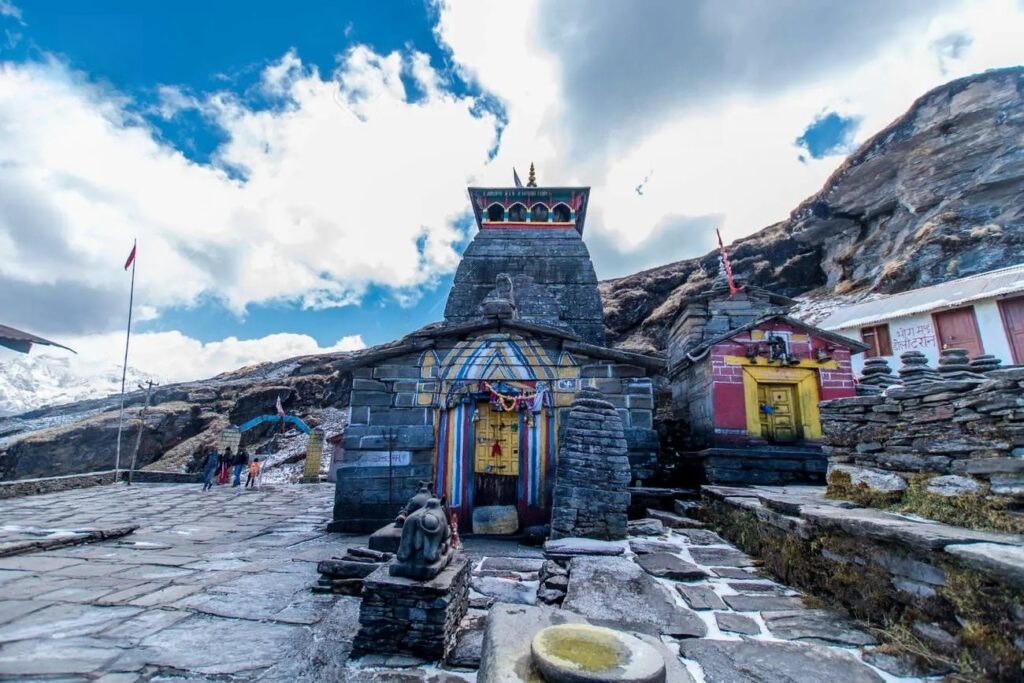
Chopta Tungnath Trek Itinerary (2 Nights / 3 Days)
DAY 0: Delhi to Rishikesh to Sari Village
- Journey Start Time: Depart from Botanical Garden Metro Station at 10:00 PM.
- Begin your overnight journey towards Sari Village via Rishikesh.
- Stop at Devprayag: Witness the confluence of the Bhagirathi and Alaknanda rivers during the journey.
DAY 1: Sari Village to Deoriatal
- Arrival at Sari Village: Check in to your homestay and freshen up.
- Trek to Deoriatal: Start your trek (2 . 5 km, approx. 1.5-2 hours).
- Enjoy Deoriatal: Relax and take in the serene views of the lake.
- Return to Sari Village: Returning to your starting point and enjoy the evening.
DAY 2: Sari Village to Tungnath & Chandrashila
- Breakfast: Enjoy a hearty breakfast at your homestay.
- Drive to Chopta: About 1 hour from Sari Village.
- Trek to Tungnath Temple: 3.5 km trek.
- Summit Chandrashila: An additional 1.5 km from Tungnath.
- Return to Chopta/Sari: After completing your treks, head back for an overnight stay at Chopta camps.
DAY 3: Chopta to Delhi
- Breakfast: Have an early breakfast at your camp in Chopta.
- Early Morning Departure: Leave Chopta early in the morning.
- Visit Dhari Devi Temple: Stop on your way back.
- Return to Delhi: A long drive of approximately 10-12 hours.
Overview of Chopta Tungnath Trek
The Chopta Tungnath Trek is one of the easiest Himalayan treks, making it great for people new to trekking. The trek covers about 12 kilometers. You will go through peaceful valleys with beautiful flowers and walk in dense forests.
One of the best things about this trek is Tungnath, the highest Shiva temple. This temple is also one of the well-known Panch Kedar temples. Spread over three days, the trek has lovely stops at Chopta and then at the summit of Chandrashila.
Each spot shows you something different, from old stories and spiritual sites to beautiful nature. You get to see so much on this Tungnath trek, including the summit of Chandrashila, the highest Shiva temple, dense forests, and connections to Panch Kedar.
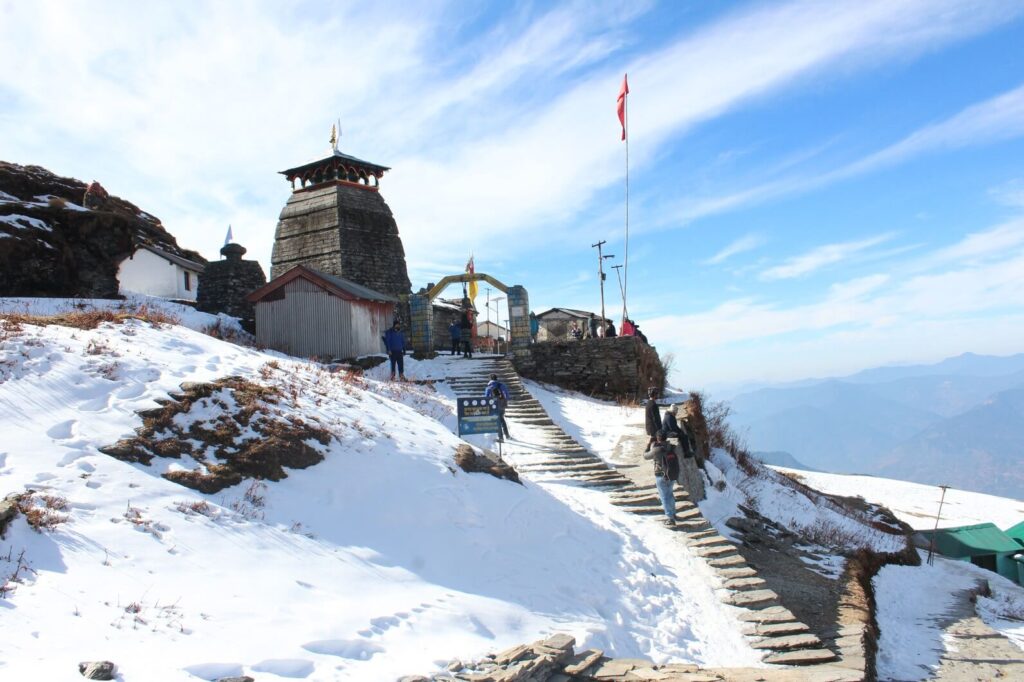
Where is Chopta Tungnath Trek Located?
The Chopta Tungnath Trek begins at Sari Village in Uttarakhand, situated at an altitude of about 8,556 feet above sea level. Nestled in the tranquil surroundings of the Kedarnath Wildlife Sanctuary, Sari is the official starting point for this scenic Himalayan journey.
From Sari, the trek first leads to Deoria Tal, a crystal-clear lake surrounded by thick rhododendron and oak forests. After taking in the calm reflections of Himalayan peaks in the lake, the trail continues toward Chopta — a quiet mountain hamlet that serves as the main base camp for the trek. The soft grassy slopes and panoramic vistas here leave a lasting impression.
As you progress, the trail ascends to Tungnath Temple, perched at 3,680 meters — the highest Shiva temple in the world and part of the revered Panch Kedar. A further climb brings you to Chandrashila summit, standing tall at 4,000 meters, offering sweeping views of Chaukhamba, Nanda Devi, and Gangotri ranges. This route beautifully blends spiritual depth with Himalayan wilderness, creating a soul-refreshing adventure into the heart of nature.
Key Highlights of the Trek
The Chopta Tungnath Trek leads you through stunning landscapes that leave a lasting impression. At its heart stands the sacred Tungnath Temple, the highest of all the Panch Kedar shrines dedicated to Lord Shiva. Pilgrims and trekkers visit throughout the year to experience its spiritual serenity.
As you continue upward, the trail culminates at Chandrashila Peak, offering spectacular panoramic views of the towering Himalayan ranges, including Trishul and Chaukhamba. The trek passes through lush alpine meadows, dense forests, and UNESCO-protected wildlife zones, making every step rich in natural beauty.
Often referred to as the “Mini Switzerland of Uttarakhand,” Chopta is accessible and welcoming to both beginners and experienced trekkers. Along the way, you may witness golden sunsets, hear the call of rare Himalayan birds, and find moments of peace in nature’s lap. Every part of this journey promises memories you’ll cherish for a lifetime.
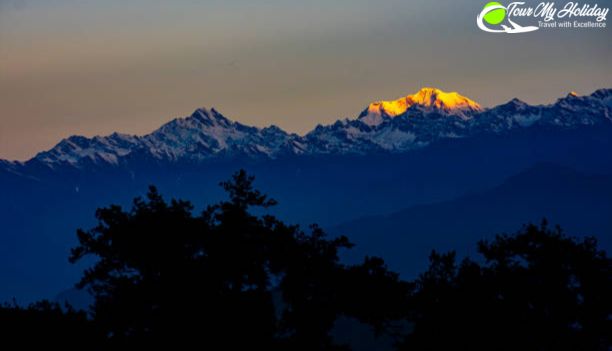
Why Choose Chopta Tungnath Trek in 2025?
If you’re looking for an unforgettable adventure in 2025, the Chopta Tungnath trek from Delhi should be at the top of your list. With improved facilities and increased focus on sustainable tourism, this year offers a better and more enriching trekking experience than ever before. Winter treks in early 2025 are particularly magical — the trail is blanketed in snow, with fewer tourists and a tranquil atmosphere all around.
Scheduled trek departures, trained local guides, and streamlined booking systems make 2025 an ideal time to explore Chopta, Tungnath Temple, and Chandrashila summit. Whether you’re seeking peace, spirituality, or snowy adventure, this trek offers it all in one scenic package.
Unique Experiences in 2025
As trekking trends evolve, 2025 is bringing more personalized and safe experiences along the Chopta Tungnath trail. Trekking agencies now offer flexible itineraries to suit all age groups, with added safety support and better acclimatization breaks.
For families, especially those with kids or elderly members, customized schedules and mule support are available. Winter trekkers in early mornings are rewarded with peaceful trails and breathtaking Himalayan sunrises over Chaukhamba, Nanda Ghunti, and Trishul peaks — a view that lingers long after the journey ends.
These thoughtful improvements make 2025 a perfect time to enjoy the Tungnath trek, blending nature, comfort, and adventure.
Latest Updates for Trekkers in 2025
In 2025, the Chopta Tungnath trek has become even more organized and accessible. Trek fees now usually include stays in eco-lodges or camps, all meals, forest entry permits, and guided support.
Mandatory forest permits for the Kedarnath Wildlife Sanctuary can now be pre-booked online or obtained at the entry points. Starting your journey from Sari Village is now smoother thanks to improved road access and coordination between local trekking operators.
Additionally, waste management practices and “Leave No Trace” principles are strictly encouraged to preserve Chopta’s natural beauty for future generations.

Who Should Attempt the Chopta Tungnath Trek?
The Chopta Tungnath trek is ideal for anyone who enjoys adventure and wants to connect with nature. It welcomes people of various age groups and fitness levels. Whether you’re trekking solo, with friends, or alongside your family, this trail offers a scenic and rewarding experience. With manageable paths and moderate difficulty, it’s perfect for both beginners and those with some trekking experience.
Age and Fitness Recommendations
The Tungnath trek is suitable for trekkers aged 10 years and above. Children and teenagers can enjoy it, provided they have basic fitness. The trail includes a steady climb, so being physically prepared helps. Regular walking, jogging, or light exercise in the weeks leading up to the trek can make the experience much easier and more enjoyable.
Senior citizens can also undertake this trek with proper precautions. It’s important to acclimatize gradually and consult a doctor before attempting the high-altitude trail. Taking frequent breaks and trekking at a comfortable pace is advised.
Having a trekking companion is always helpful—whether it’s for safety, motivation, or shared joy.
Suitable Trekking Groups: Solo, Family, or Friends
The Chopta Tungnath trek is a great fit for all kinds of travelers:
- Solo Trekkers: Those looking for solitude and a deeper connection with nature often find peace and personal growth on this serene trail.
- Families: This moderately difficult trek offers a safe and memorable adventure for families, giving them a chance to bond while enjoying the Himalayas.
- Friend Groups: For friends seeking a mix of fun, challenge, and scenic rewards, the trek to Tungnath Temple and Chandrashila is the perfect escape.
Regardless of your group size, a reasonable level of fitness and preparation ensures a fulfilling trekking experience filled with panoramic views and spiritual charm.
Flora and Fauna on the Chopta Tungnath Trek
The Chopta Tungnath trek offers a breathtaking journey through the rich biodiversity of the Indian Himalayas. As you trek through dense forests and open meadows, you’ll witness a vibrant mix of flora and fauna. Spring and early summer fill the alpine slopes with wildflowers, while rare wildlife such as the Himalayan black bear and colorful birds like the charpial (Himalayan griffon) add excitement to the journey.
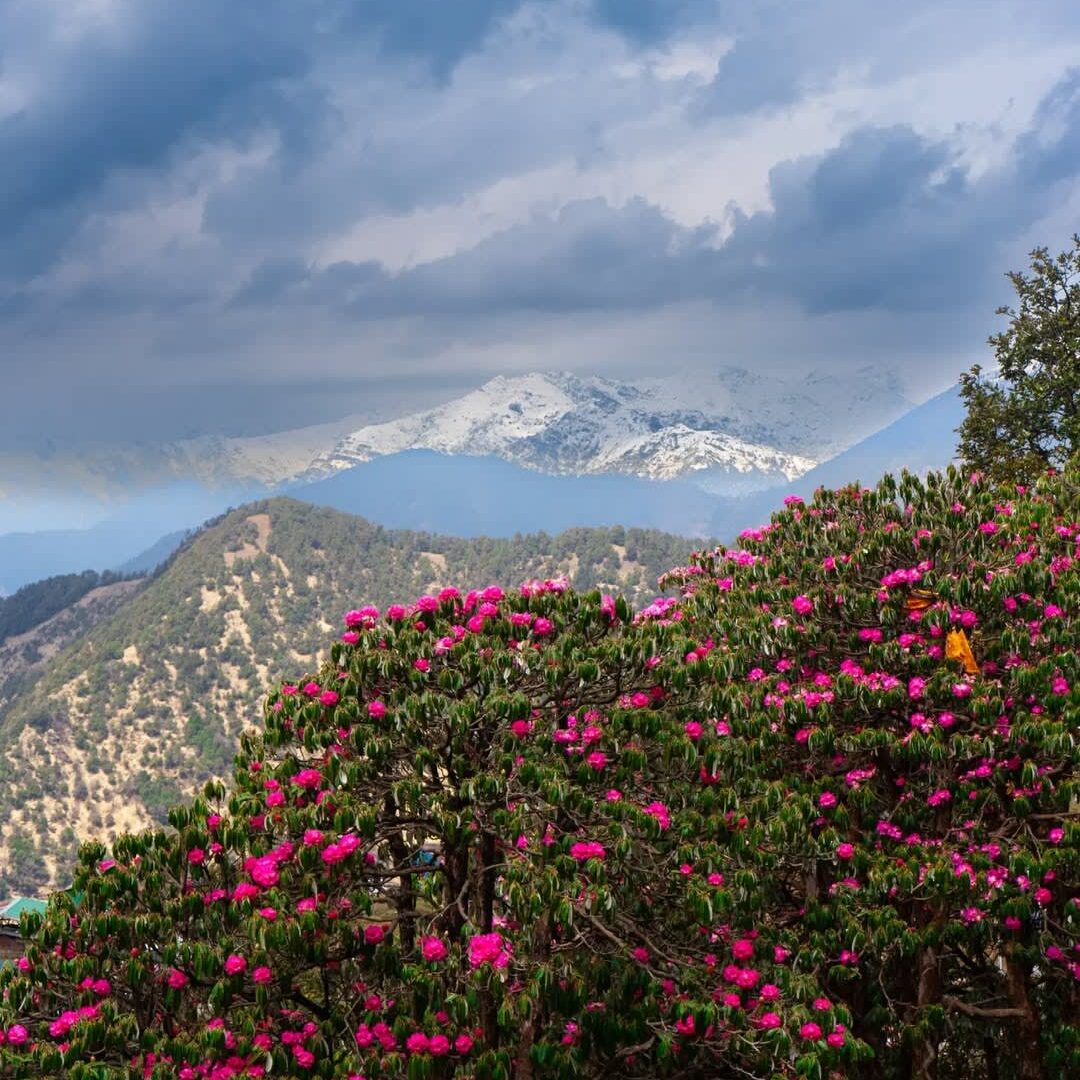
The Legend of Tungnath Temple
According to mythology, after the Kurukshetra war, the Pandavas sought Lord Shiva for forgiveness. Shiva, avoiding them, took the form of a bull and fled into the Himalayas. When his body broke into parts, his arms are believed to have fallen at Tungnath.
This makes Tungnath Temple not just a physical high point but a spiritual one, drawing both devotees and trekkers for its mythological importance and scenic beauty.
Stunning Alpine Flora
One of the trek’s biggest highlights is its spectacular alpine flora. As you ascend toward Tungnath Temple at 3,680 meters, you’ll pass through fields of rhododendrons, orchids, and primulas.
In winter, the meadows are covered in snow. But come spring, they burst into color again. These high-altitude plants not only add to the landscape’s beauty but are essential to the Himalayan ecosystem. Take time to observe and appreciate them—each flower tells a story of resilience in this tough terrain.
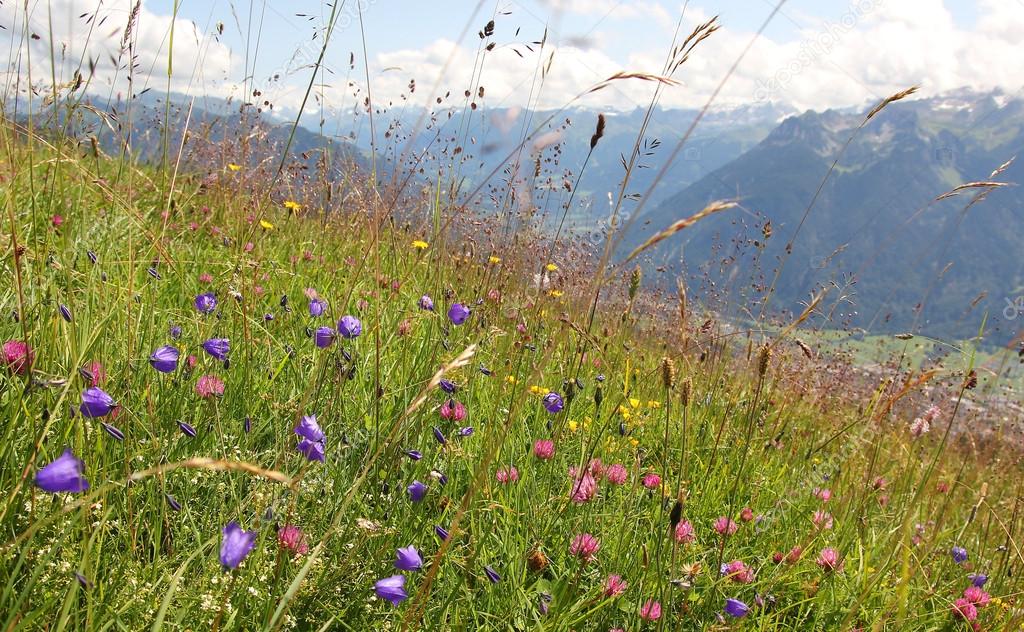
Himalayan Wildlife You May Encounter
Spotting wildlife on the Tungnath trek adds another layer to the adventure. The forests are home to musk deer, Himalayan black bears, and even the elusive snow leopard, though sightings of the latter are rare.
Bird lovers will enjoy the company of species like the Himalayan Monal, woodpeckers, and the Himalayan griffon. Early mornings and evenings are the best times to see these animals in action. Respecting the natural environment ensures that wildlife continues to thrive along this treasured trail.
Birdwatching Opportunities
Birdwatching is a favorite activity on the Chopta Tungnath trek, thanks to the region’s unique geography and natural diversity. Whether you’re an avid birder or just curious, keep an eye out for the Himalayan Monal, Kedarnath Finch, and other rare species.
Go trekking early in the morning to hear their songs echoing through the valley. Carrying a pair of binoculars and a bird guidebook can make your birdwatching experience even more rewarding.
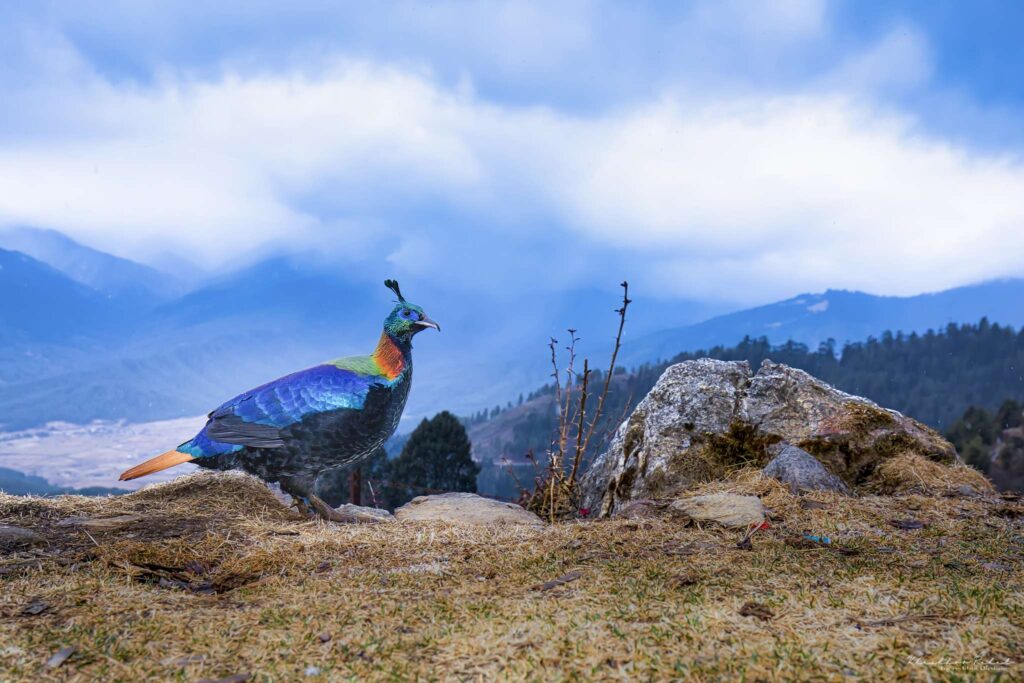
Cultural and Mythological Significance
This trek isn’t just about scenic views—it’s a walk through legends. The Tungnath Temple is the highest Shiva temple in the world and a major site among the Panch Kedar. As you hike through the trail, you’ll feel the spiritual atmosphere created by the traditions and rituals of the locals.
Stories of Lord Rama and Shiva’s blessings are tied to these mountains. For pilgrims and spiritual travelers, the journey holds deep cultural meaning beyond just its natural beauty.
Chandrashila Peak and Its Stories
Chandrashila Peak is famous for its stunning and wide views. This spot is loved by many trekkers. It sits at about 4,000 meters high. The peak is not just a great vantage point. It is also important in stories and myths. Many people say that Lord Rama came to this place to meditate after he defeated Ravana. Because of these stories, there is a special and mystical feeling here.About Chandrashila – The Summit of the Chopta Tungnath Trek
Chandrashila, meaning “Moon Rock,” is the stunning summit point of the Chopta Chandrashila trek, located just 1.5 km above the sacred Tungnath Temple. Standing at an elevation of around 4,000 meters, it offers breathtaking 360° views of the snow-clad Himalayan peaks including Nanda Devi, Trishul, and Chaukhamba. This final stretch of the Chopta Tungnath trek is slightly steep but rewarding, especially at sunrise when the entire range lights up with golden hues. The Chandrashila summit holds spiritual significance and adds a majestic climax to one of Uttarakhand’s most scenic and spiritually rich treks.
At the top, you can see amazing views of the Himalayas around you. Some of the best sights from here include Nanda Devi and Kedarnath. People who love adventure and nature often visit this place. They get inspired by both the tales and the calm, spiritual mood that fills the place. Climbing to Chandrashila Peak gives you more than just beautiful views. It lets you feel some of the culture and old stories too. This peak truly brings together the beauty of nature and the value of the local heritage.
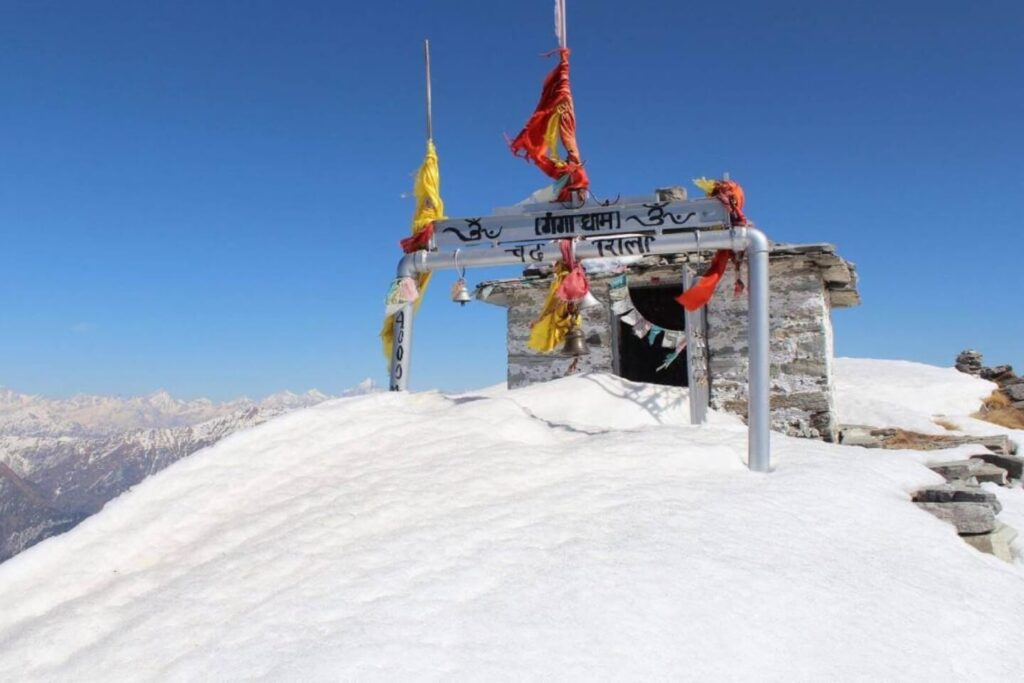
What Meals to Expect on the Trek
During the Chopta Tungnath trek, meals are simple, hearty, and designed to keep your energy levels up throughout the day. You can expect staple Indian dishes like dal, rice, roti, and seasonal vegetables, many of which are sourced from nearby local farms. Most trekking organizers provide options for both vegetarian and non-vegetarian diets, ensuring that everyone’s needs are covered.
Snacks typically include energy bars, nuts, and dried fruits—perfect for quick boosts of energy along the trail. It’s also important to stay hydrated, and while water is generally available at various points, carrying your own refillable bottle is a smart idea.
One of the highlights of the trek is the shared mealtime. Sitting with your group, enjoying hot food after a day’s hike, and taking in the panoramic Himalayan views makes for a truly memorable experience.
Dietary Preferences and Allergies
Dietary needs are not the same for all trekkers. It is important to tell the trekking company or support staff about any food allergies or special needs you have. You should do this before you go on the Tungnath trek. Many prepared meal packs now offer vegetarian, vegan, or gluten-free choices. If you have any food allergies, you must carry your personal medical kit with the medicine you need. Let trek leaders know about your needs, too. Sometimes, dishes have nuts or dairy, so get to know the local foods and what is in them. It is a good idea to bring snacks that fit your diet. This will help you keep your energy up and enjoy your trek safely.
Staying Hydrated – Water Sources and Tips
Staying hydrated is very important on the trek. It helps you avoid altitude sickness and keeps your body working well. On the Chopta Tungnath route, you will find fresh water in streams and springs. This is more common when it is warm. Still, you should always bring your own water bottle. You can use it to collect water and filter it if you need to. Water purification tablets or a small filter should be with you. Before you go, check the weather conditions. As you move up in a gradual ascent, stop now and then to drink water. You might also want to carry drinks with electrolytes. They will help to replace minerals you lose and will help you keep going. You get all this while looking at the stunning views around you.
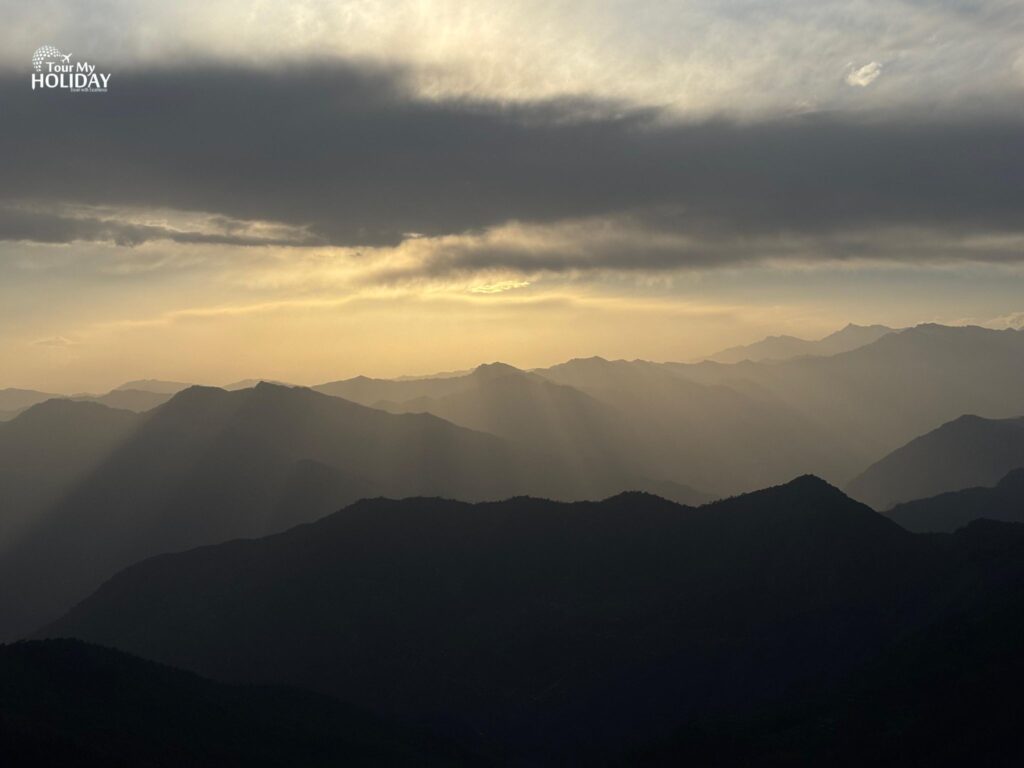
Clothing and Layering for Himalayan Weather
When trekking in the Himalayas, especially on routes like the Tungnath trek, wearing the right clothes is key to staying safe and comfortable. Start with moisture-wicking base layers to keep sweat away from your body. Add thermal layers for warmth, especially during chilly nights. Your outer layer should be windproof and waterproof, which is essential in case of sudden weather changes.
Opt for trekking pants that are breathable and allow free movement. For your feet, wear sturdy hiking boots with good grip—they’re essential for rocky and uneven terrain. Don’t forget important extras like gloves, a sun cap, and a scarf to protect yourself from both cold and sun exposure.
Must-Carry Trekking Equipment
Carrying the right gear makes a big difference on treks like the Chopta Tungnath trek, which has moderate difficulty. Start with high-grip trekking boots to help you navigate rough ground. Dress in layered clothing, including thermals for warmth and outerwear for wind and rain.
Bring a personal medical kit for cuts, blisters, or minor injuries. A sturdy backpack is necessary for storing essentials. Trekking poles are very helpful during steep or long climbs. Carry a sun cap, wet wipes, and a lunch box for hygiene and convenience on the trail.
Useful Gadgets and Accessories
Adding smart gadgets can improve your experience. A GPS-enabled trekking watch helps you track your distance and altitude changes, which is helpful for avoiding altitude sickness. A compact power bank ensures your devices stay charged for photos and communication.
Lightweight trekking poles give you extra balance on steep terrain. Carry a portable water filter to purify stream water during your trek. With these tools, your Tungnath trek will be more enjoyable and worry-free.
Preparing Physically for the Trek
To enjoy your trek, especially at high altitudes, physical fitness is crucial. Work on cardiovascular health through jogging, cycling, or hiking. Practice walking on different surfaces and inclines to build stamina and balance.
Add strength and flexibility training to your routine. Exercises like yoga improve flexibility and reduce injury risk, especially in uneven or rocky trails. It’s also wise to acclimatize by spending a day or two at higher elevations before starting the trek. This helps your body adjust to altitude and makes the Tungnath trek safer and easier to complete.
Emergency Contacts and Protocols
When planning the Chopta Tungnath trek, always set up a list of emergency contacts. Include details of nearby hospitals, local police stations, and ambulance services in the Rudraprayag district. Also, add contact numbers for your trekking agency and local guides. This list ensures quick help in case of a medical or weather-related emergency.
Always keep your phone fully charged before starting the day’s trek. In areas where there’s no signal, consider carrying a satellite phone. Trek leaders should be aware of any existing health conditions in the group. Keeping a personal medical kit and knowing your trekking group’s emergency communication plan ensures a safer Tungnath trek experience.
Environmental Responsibility and Trek Etiquette
The Chopta Tungnath trek leads through some of Uttarakhand’s most untouched natural beauty. As a visitor, you must follow Leave No Trace principles. Carry your trash with you, use eco-friendly toiletries, and avoid single-use plastics. This will help preserve the fragile environment of alpine meadows and dense forests.
Show respect to local villagers by being mindful of noise, behavior, and littering. Using biodegradable wipes, keeping your camping site clean, and respecting cultural beliefs helps build positive relations and supports sustainable trekking.
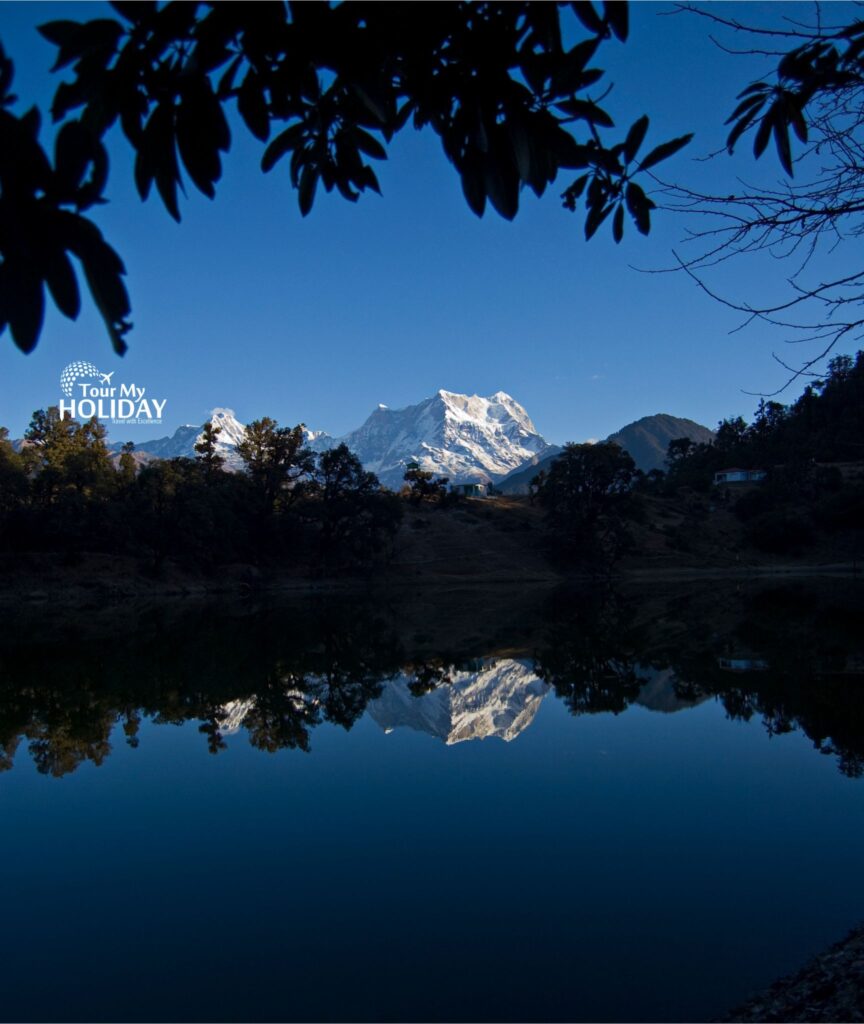
Leave No Trace Principles
Sticking to Leave No Trace practices is essential in this ecologically sensitive region. Always dispose of waste responsibly—carry a trash bag and take your litter back with you. Avoid disturbing wildlife, stay on designated trails, and use eco-friendly soaps. Campfires should be avoided to protect local vegetation.
By setting an example, you also inspire fellow trekkers to follow sustainable trekking habits during their Tungnath trek, helping protect this Himalayan paradise for generations to come.
Respecting Local Communities
Interacting with locals during the Chopta Tungnath trek enhances the journey. Buying locally made items supports the economy and preserves cultural traditions. Always ask before taking photographs, and be mindful of religious customs and sacred places.
Be polite and avoid being disruptive in villages. Simple acts like greeting locals or learning a few words in the local language create a respectful and immersive travel experience.
Sustainable Trekking Practices
Choosing sustainability ensures the Chopta Tungnath region remains beautiful. Stay on marked trails to prevent erosion, carry reusable water bottles, and support eco-lodges or homestays that promote green tourism. Engage with the community in a way that benefits them while keeping your ecological footprint low.
Encourage fellow trekkers to do the same—share your knowledge about protecting local flora, fauna, and culture while enjoying the majestic Tungnath Temple trek.
Beginner’s Guide: How to Choose the Perfect Chopta Tour Package
Start your Chopta journey with the official travel guide. Choosing the best tour package for Chopta needs some thought. First, you need to know what you want from the trip. Do you like trekking to Chandrashila Peak or would you rather see Deoria Tal lake? There are many good options you can pick from.
Look for a package that has all the needed things, like a nice place to stay and guided tours with people who know the area well. It is also good to see if there is easy travel from Jolly Grant Airport, if you can change your plan a little, and the size of the group.
Chopta is rich in natural beauty, with lots of amazing views. So you have to make sure the tour you choose offers you time to see all this for yourself. That will help you get the kind of immersive experience you want.

FAQs about Chopta, Tungnath, and Chandrashila
- Where is Chopta located?
Chopta is a serene hill station in the Rudraprayag district of Uttarakhand, situated at an altitude of 2,680 meters. It lies in the Kedarnath Wildlife Sanctuary and is the base for the Tungnath and Chandrashila treks. - What is the Chopta Tungnath Trek famous for?
The trek is known for leading to Tungnath, the world’s highest Shiva temple, and further to Chandrashila Peak, offering 360° Himalayan views including peaks like Nanda Devi and Chaukhamba. - How difficult is the Chopta Tungnath Trek?
The trek is of easy to moderate difficulty, making it ideal for beginners and families with basic fitness levels. - How long is the Tungnath Temple trek?
The trek to Tungnath Temple from Chopta is approximately 3.5 km one way, well-paved and manageable for most age groups. - How much further is Chandrashila from Tungnath Temple?
From Tungnath Temple, Chandrashila is an additional 1.5 km uphill, which is steeper and slightly more challenging. - When is the best time to visit Chopta and do the trek?
The ideal seasons are March to June (spring-summer) and September to November (autumn). For snow trekking, December to February is best. - Can I do the Chopta Tungnath trek from Delhi?
Yes, many operators offer a Chopta Tungnath trek from Delhi that includes travel, stay, and guide services—perfect for weekend getaways. - Is a permit required for the Chopta trek?
Yes, forest permits are required as the trek passes through Kedarnath Wildlife Sanctuary. These are usually arranged by your trekking agency. - What is the altitude of Tungnath Temple?
Tungnath Temple is located at an altitude of 3,680 meters (12,073 ft) above sea level. - What is the altitude of Chandrashila Summit?
Chandrashila stands at approximately 4,000 meters (13,123 ft) and provides unmatched panoramic views of the Garhwal Himalayas. - Is mobile network available in Chopta?
Network connectivity is limited. Jio and BSNL work better than other providers, but you may lose signal along the trek. - Can beginners do the Chopta Chandrashila trek?
Absolutely. The Chopta Chandrashila trek is well-suited for first-time trekkers with basic physical fitness. - What should I pack for the trek?
Layered clothing, trekking shoes, a medical kit, water bottle, power bank, torch, and raincoat are essential. - Are meals provided during the trek?
Yes, most trek packages include vegetarian meals—simple and energizing dishes like dal, roti, sabzi, and rice. - Can I camp at Chopta?
Yes, camping is popular in Chopta. Several tour operators and homestays offer tent accommodations with basic amenities. - Is the Chandrashila trek open in winter?
Yes, but the trail may be covered in snow. It’s recommended to go with an experienced guide if trekking in December–February. - What is the distance from Delhi to Chopta?
The road distance is about 450 km, typically taking 10–12 hours by car or bus. Most routes go via Rishikesh and Rudraprayag. - Are there any budget Chopta tour packages available?
Yes, many travel agencies offer affordable Chopta tour packages with transportation, accommodation, meals, and trekking support. - What is the legend behind Tungnath Temple?
According to mythology, Lord Shiva’s arms appeared at Tungnath, making it one of the five sacred Panch Kedar temples. - What kind of wildlife can be seen on the trek?
You may encounter Himalayan Monals, musk deer, foxes, and occasionally black bears. The area is rich in flora and fauna.